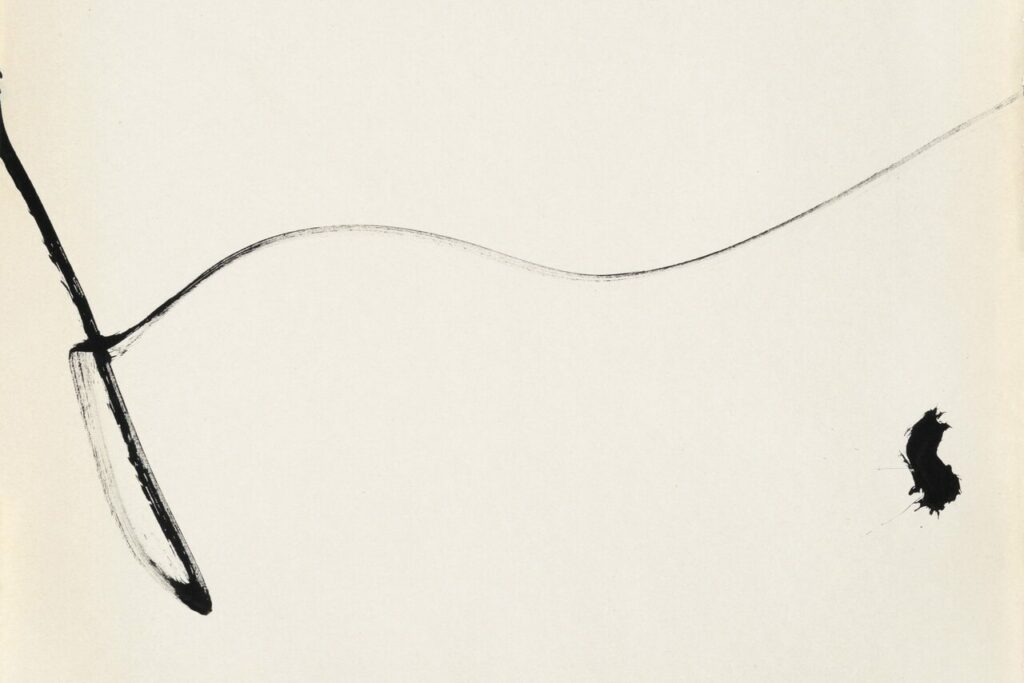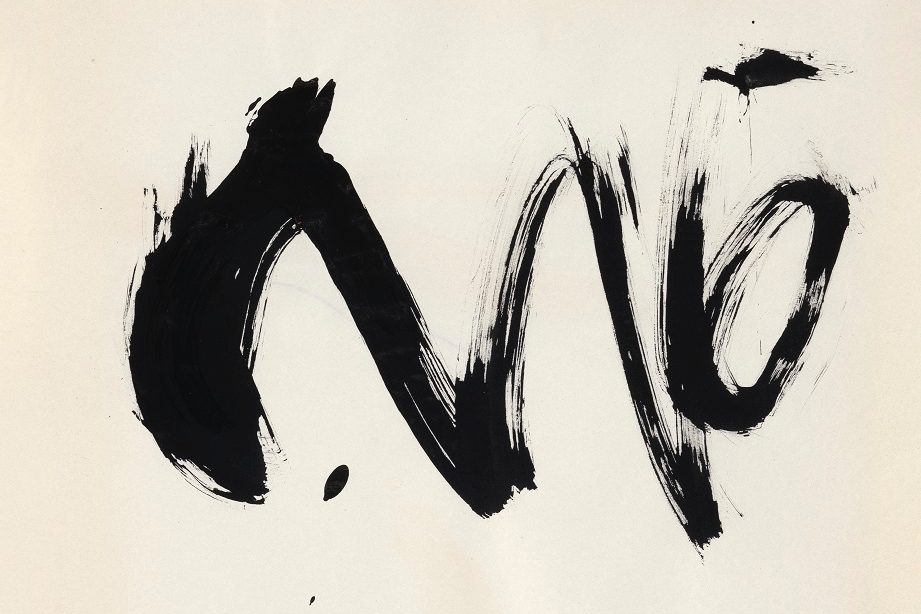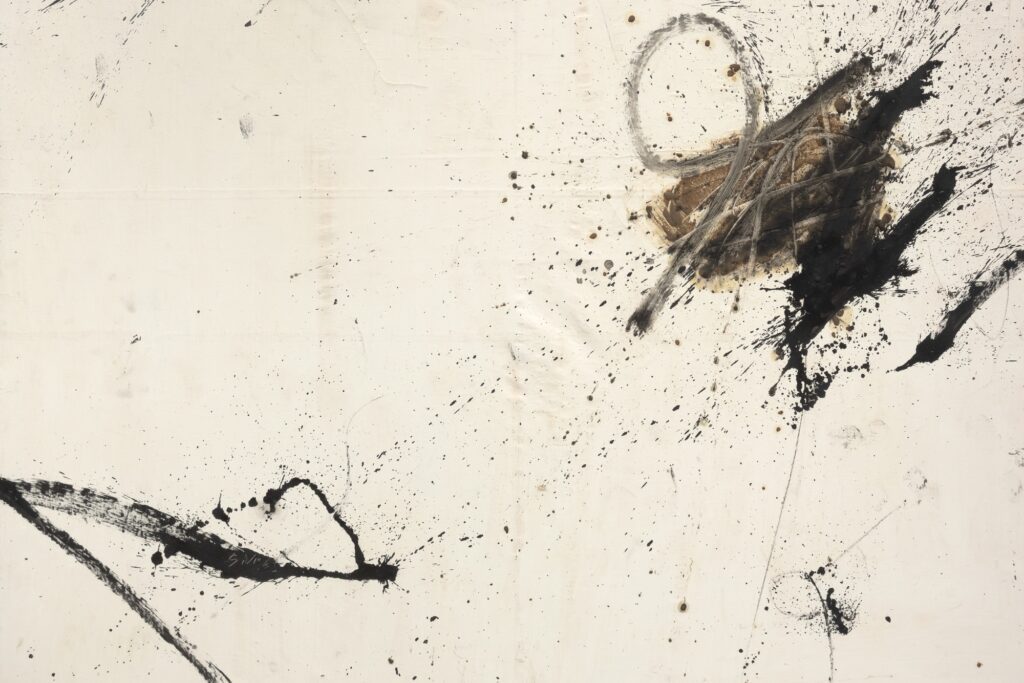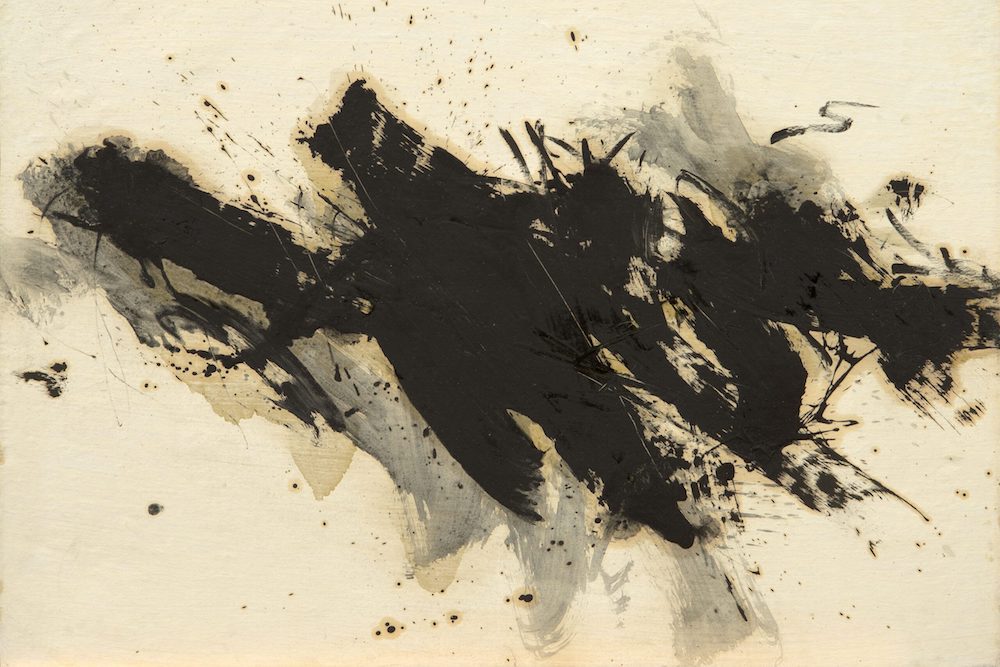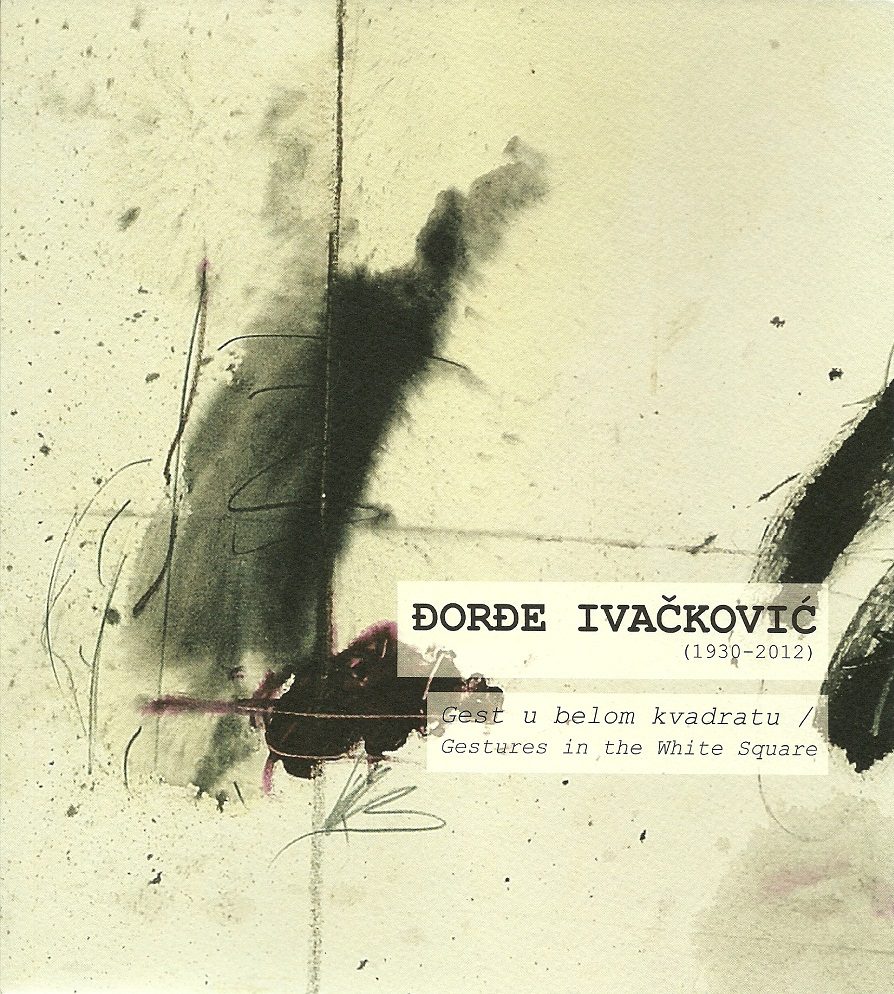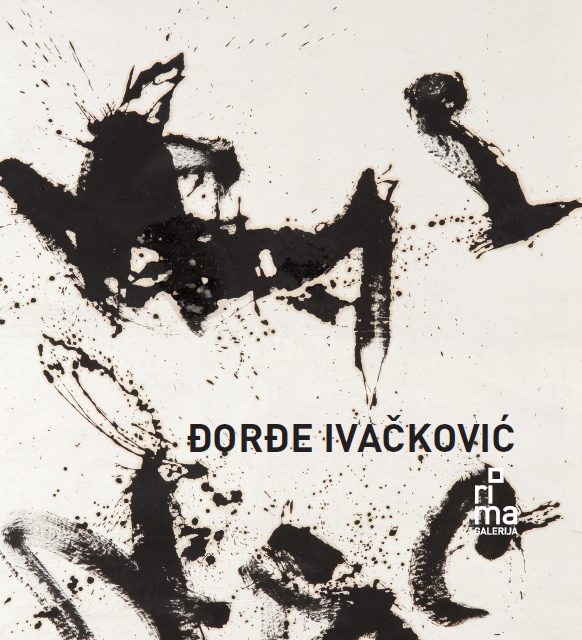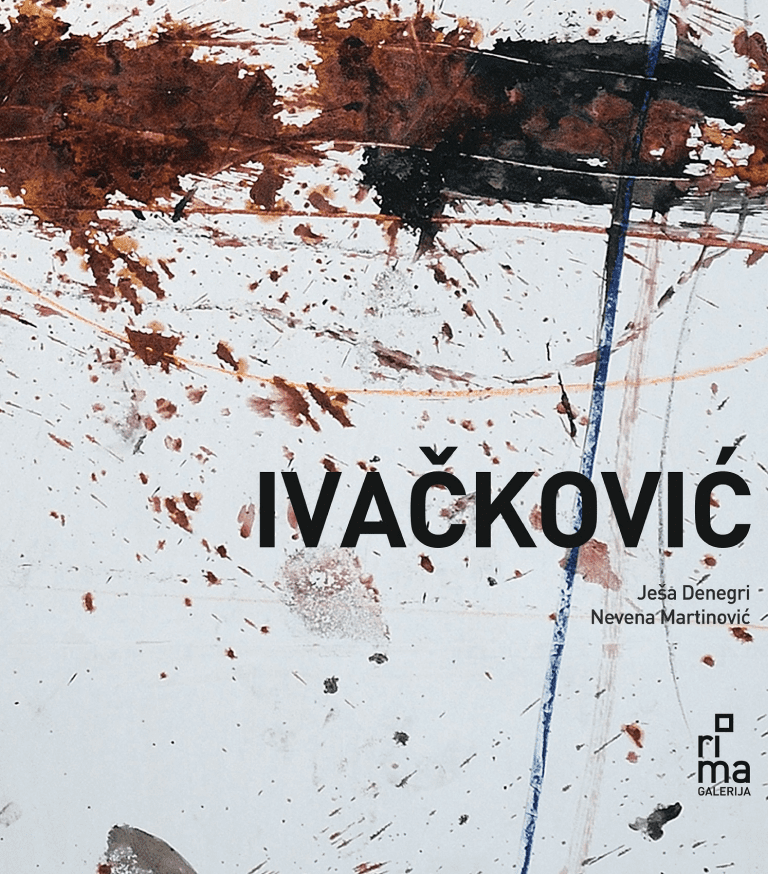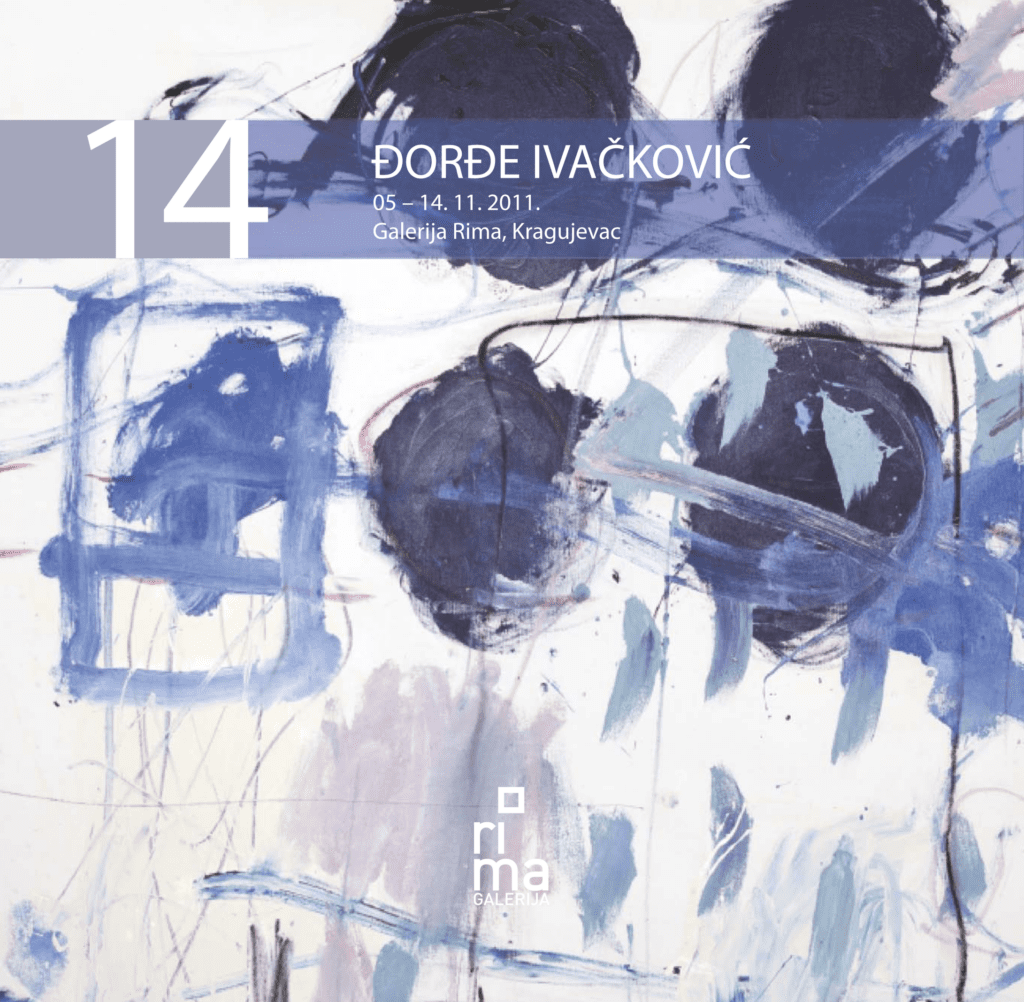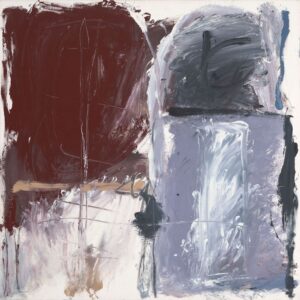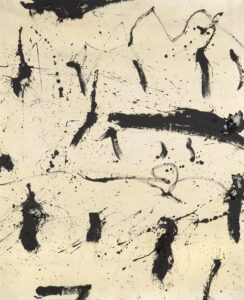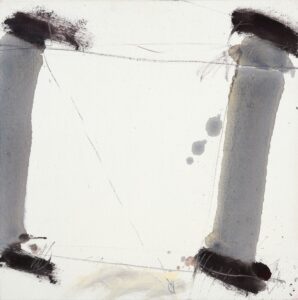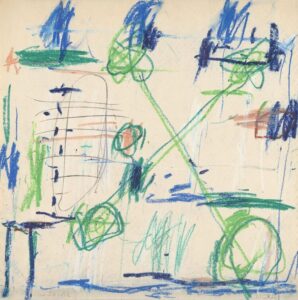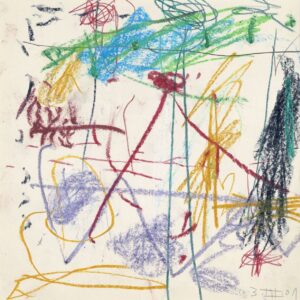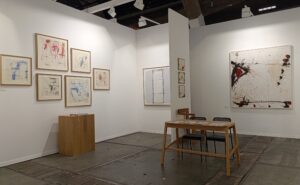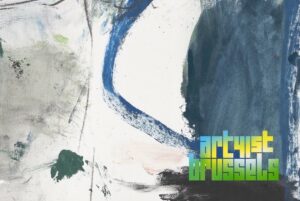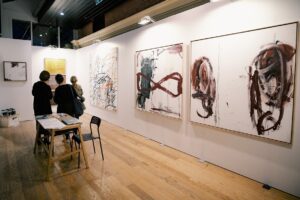
Đorđe Ivačković
(Horgoš, 1930 – Paris, 2012)
Ivačković’s authentic art poetics originated from the symbiosis of two opposite approaches to abstract painting. The expressive, free, improvisational element had its base in postwar French lyrical abstraction and American abstract expressionism, both experienced through the creative mind of a jazz musician. The second one belongs to the analytical approach to painting, contemporary art practices of the time, dealing only with picture’s basic and elemental structural features such as format, dimensions, surface, line and color. With a restless mind of a jazz musician and a rational approach of an architect Ivačković created the unique synthesis of expressive and analytical abstraction.
***
Đorđe Ivačković (Djordje Ivackovic) was a Serbian born (and former Yugoslav) and Paris based abstract painter whose art development and recognitions belong to the international art scene between 1960s and 1990s.
He completed the consolidated high school in Novi Sad (1948) and Faculty of Architecture in Belgrade (1955). He was an educated pianist since his early childhood and became a jazz lover very early in his life. During the 1950s, at the time of his studying architecture, he was a part of the Belgrade jazz scene, performing jazz music with his band. He was known by the nickname Djoka “Bop” (Djoka – diminutive of Djordje, “Bop” from the jazz style Bee-Bop) and stayed remembered in the local jazz history as the first musician to own his private typerecorder in Belgrade.
Ivačković began to paint in the mid 1950s, after seeing exhibitions of contemporary American and French painting in Belgrade (1952, 1956, 1958). Encountering for the first time abstract expressionism and lyrical abstraction of postwar masters, Ivačković approached this kind of painting from a stance of a musician, starting his art journey directly in the realm of pure abstraction from the very beginning. Painting became a new space for the type of expression and creation he experienced in playing music. After traveling through Europe to get better acquainted with the current tendencies in visual arts (Italy, 1957, Germany, 1959, Paris 1961), he settled permanently in Paris in 1962. Although he started painting while living in Belgrade, he publicly displayed his work only after settling in Paris, hence becoming integrated into the Paris art scene where he earned international recognitions already during the 1960s.
Ivačković’s international recognition started off with participation at the Paris Biennial in 1965 (selection of 8 painters chosen by young French art critics). From the late 1960s to 1990s – his art raised interest among galleries, institutions and art collectors, leading to important solo shows in Paris, Lyon, Toulouse, Brussels, Belgrade, etc., as well as being represented at international art fairs (FIAC, Art Basel etc.) as well as being included in major exhibitions of Yugoslav contemporary art that traveled Europe and the world.
During the 1960s and early 1970s his art was interpreted through analogies with jazz – the fast process of painting, creating quick improvisation, dominance of movement and rhythm in the creative act, semi-controlled procedures etc. By signing his paintings with the precise date of their creation, Ivačković preserved the element of time in painting as a spatial art. But, very early on, his abstraction was recognized not to be just a mare extension of postwar Paris art school, as an important part of his painting was the analytical approach to the picture surface and its plastic elements. Each of his paintings, although created in a fast and improvisational manner, leans on knowledge and choices built through hundreds of small sketches and diagrams in his artist’s diaries where he analyzed different elements of the painting: format, dimensions, light, material, space, positions and relations of a dot, line and surface, etc. Hence, he coined a term for his creative procedure – pre-programed automatism.
Ivačković’s paintings between mid-1970s and early 1980s belong to his “conceptual period” in which his most important structural elements took over the main position in his paintings – square format of the picture (also reflected in the forms within the picture) and the pure white surface of the canvas. Ivačković refered to them as “the zero level” necessary for freedom of creation. French art historian Jean Luc Chalumeau placed Ivačković as one of three non-French artist (other two being Joan Mitchell and Simon Hantai) who gave immense contribution to development of abstract painting in France during the years of crisis for painting in general.
Global revival of the painting as a media in 1980s was a period of the so called “energetic structures” in Ivačković’s art that lasted well into the 1990s. Besides giving additional freedom to gestural expressive approach, Ivačković’s white squares became inhabited by dominant and strongly imposing surfaces of color. It was noticed that he moved from chamber music to philharmonic orchestra. He took part in a number of group exhibitions and the most important visual art manifestations in Paris, and in 1983 he received the grand prix for painting at the renowned Salon in Montrouge. In 1986 the Highway Association purchased his painting and used it as model for a big mosaic placed in 1991 by the AutoRoute du Soleil in France.
During the late 1990s and at the beginning of the new millennium Ivačković gradually ceased painting. New wave of interest in his work arose after 2010, when Serbian galleries and institutions started researching his life and work, and exhibiting his paintings from different periods, leading to many different international institutions and foundations reviving their interest in Ivačković as a specific participant in the development of French and European art scene between 1960s and 1990s.
Today his works can be found in Centre Pompidou in Paris, Neue Galerie in Graz, Museum of Contemporary Art and National Museum in Belgrade, as well as in prominent private collections and foundations.
